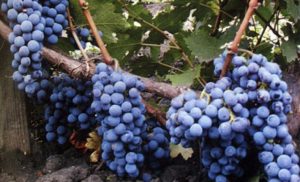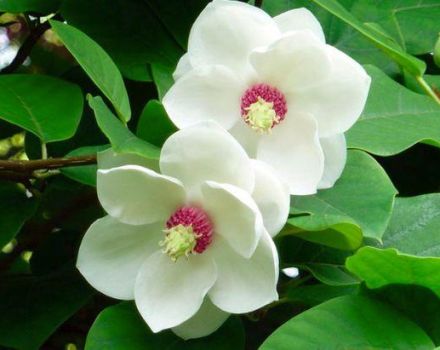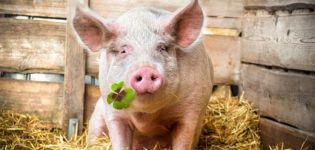Description of the grape variety Kishmish 342, its pros and cons, tips for growing and care
The Kishmish 342 grape variety has many advantages that have determined the high popularity of the culture among gardeners. This culture attracts with a pleasant taste of berries that do not contain seeds. The plant has low maintenance requirements and an early harvest. The vine is characterized by rapid growth, so the grapes must be pruned constantly.
A bit of history
This variety appeared thanks to the work of Hungarian breeders. The plant was obtained by crossing the technical grapes Save Villars and the early maturing culture of Flight.
From the ancestral forms Kishmish 342 received the ability to withstand subzero temperatures.
The plant produces early fruit suitable for consumption. The vine can be grown in areas with a harsh climate: the northern parts of the Urals, Belarus.
Description of the variety
The description of the variety says that Hungarian grapes are characterized by rapid growth. Therefore, the plant is grown away from other crops and pruned regularly. To achieve good ripening, gardeners recommend removing 6-8 "eyes" on the vine. Due to this, up to 85% of the shoots will bear fruit on one plant.
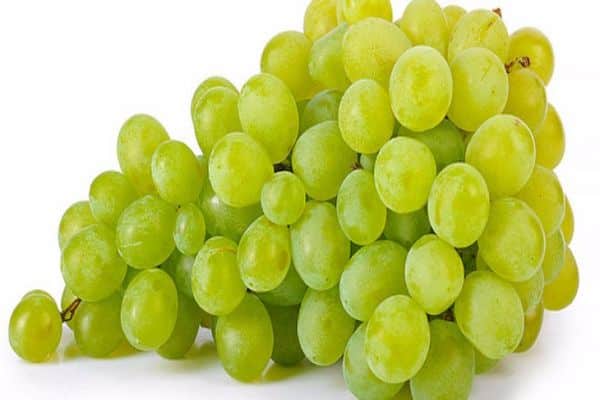
The vine gives a bountiful harvest, the total weight of which reaches 25 kilograms. The mass of one bunch is 600 grams. But sometimes this figure reaches 1.5 kilograms.
Kishmish 342 practically does not form rudimentary formations. This is due to the fact that shoots and bunches provide a sufficient load on the vine, thereby preventing the development of this process.
In Central Russia, Kishmish yields a harvest by September, in the southern regions - by mid-August. The ripening of the bunches, on average, takes up to 135 days from the moment the vine begins to bloom.
Plant and berry characteristics
Kishmish 342 is characterized by stable fruiting. The variety can withstand frosts down to -26 degrees, subject to the covering technique for the winter. This process is complicated by the fact that the plant grows quickly and has a resilient vine.
The berries of the culture are characterized by the following features:
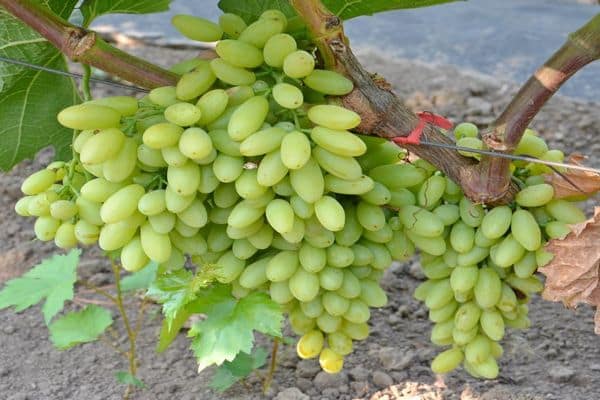
- lack of seeds, due to which the berries are used to make raisins;
- oval shape;
- weight is 3-4 grams;
- firm and sweet pulp;
- sugar level reaches 19-21% (depending on climatic conditions).
Kishmish is mainly used for the preparation of table wines because of the nutmeg flavor. The grapes are dense and therefore suitable for transportation over long distances.
Kishmish can be kept refrigerated for up to 5 weeks after harvest.This variety is resistant to most fungal pathologies typical of grapes. Due to the high sugar content, the plant is often attacked by wasps. It is recommended to organize insect traps near the vine.
Pros and cons of Kishmish grapes 342
Kishmish 342 grows in different climatic conditions, which is explained by the good resistance of the variety to low temperatures. The advantages of culture include the following features:

- lack of seeds in berries;
- pleasant fruit taste;
- resistance to common fungi;
- low requirements for care;
- high productivity;
- fast growth;
- strong vine.
Bunches of Kishmish are not recommended to be kept on the vine for a long time after ripening. In this case, the fruits lose their presentation. In case of non-observance of the rules of care and cultivation, the bush quickly becomes overgrown with foliage and extra shoots, which negatively affects the yield.
Planting tips
For planting, it is recommended to choose well-lit areas located on the eastern or western parts of the site. The support next to the bush should be installed at a distance of 80 centimeters. The spacing between seedlings should be more than 3 meters. Planting Kishmish must be carried out in early April or in October, before the onset of frost.
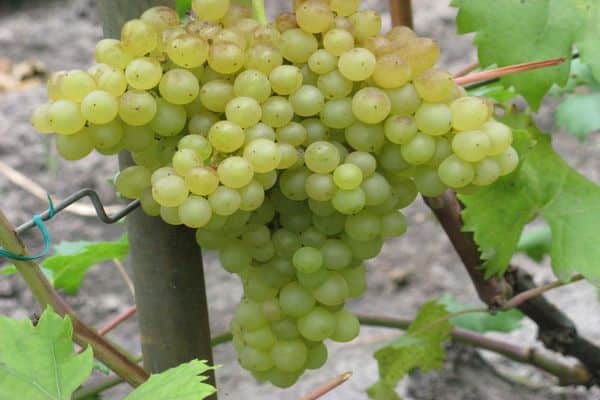
The length of the seedling pit is 80 centimeters, the width is 70 centimeters. Expanded clay or crushed stone, necessary to create a drainage layer, should be poured onto the bottom. From above, the pit is half-filled with a mixture of turf, humus, wood ash and sand. After that, a peg and a seedling are dug in. The plant is watered abundantly with water, and the soil near the future vine is mulched.
At the end, the seedling is cut into 2 "eyes". The place for the scion must remain above the ground.
Growing and care
Every year the grape bushes are cut into 6-10 "eyes". Each season the plant is watered abundantly, mulched and treated against fungi. Three months after planting, the upper parts of the seedlings are pinched.
In the middle of summer, potash-phosphorus fertilizers are introduced into the soil. During the season, it is also necessary to remove excess shoots and shoots.
Diseases and pests
To avoid contamination of the culture, it is recommended to treat the plant with Bordeaux mixture or other biological products every spring. Kishmish 342 is rarely sick. The main danger to the plant is carried by insects: wasps, beetle, spider mites and leafworm. Without proper care, grapes can lose up to 90% of shoots and leaves.
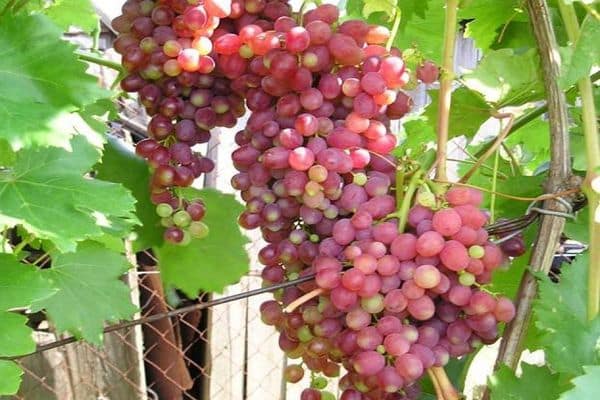
Where is the best place to grow?
Kishmish 342 grapes can be grown both in the southern regions of the country and in areas where in winter the temperature often drops to -26, -30 degrees.
A crop can thrive in a variety of climates, provided that proper care is taken. The optimal soil for growing is black soil.
